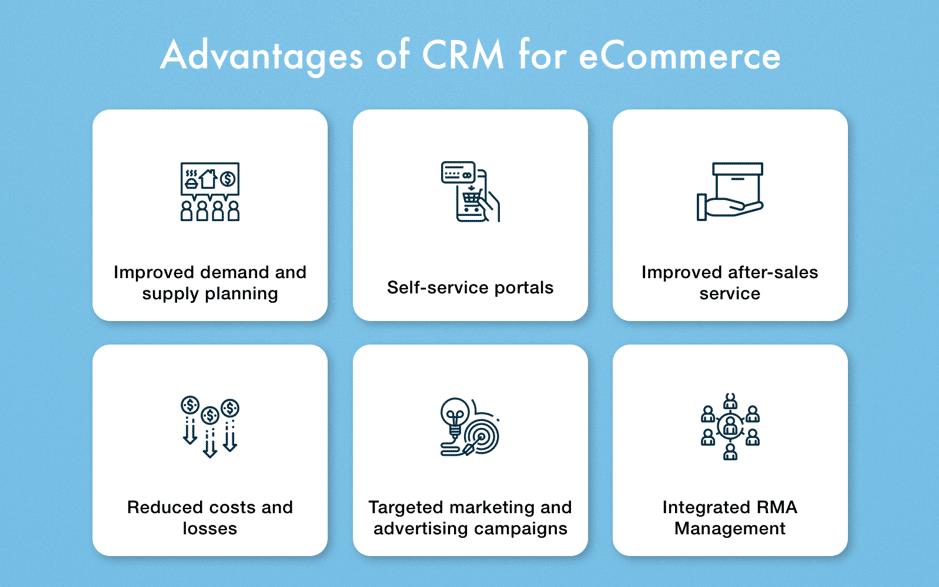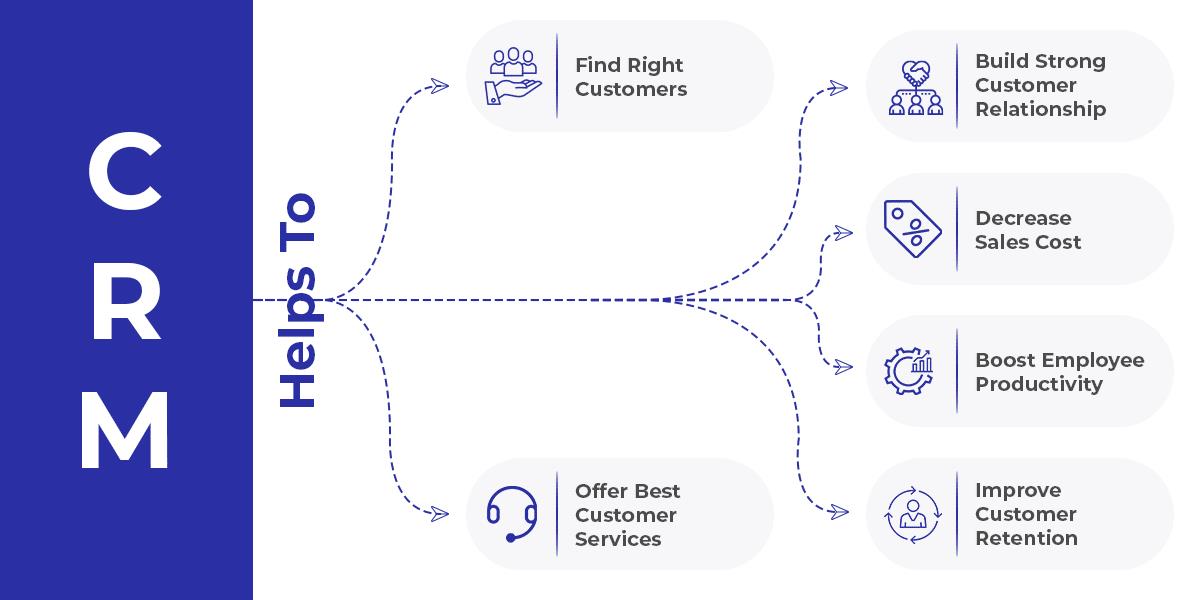You’ve built a sleek e-commerce storefront and invested in fancy ads. But is your marketing strategy reaching its full potential?
In 2025, effective e-commerce marketing depends on more than campaigns. It hinges on customer relationships. That’s where CRM becomes a major asset.
A smart CRM isn’t just a database of contacts. It’s your command center for personalizing offers, anticipating behaviors, driving loyalty, and maximizing lifetime value.
When your CRM reads like your best salesperson, your e-commerce marketing gets a serious boost.
Quick Takeaways:
- CRM tools help you send the right message at the right time based on each shopper’s behavior. Personalized experiences lead to higher engagement and better conversions.
- You can group shoppers by order history, interests, or lifecycle stage. That way, you’re not guessing—you’re sending offers that actually make sense to them.
- CRM workflows handle tasks like cart abandonment emails and reorder nudges automatically. You make money while your team focuses on bigger strategies.
- AI features in CRM tools forecast who’s likely to buy—or bounce. With that info, you can act early and keep more customers around.
- CRMs pull performance data from multiple channels into one place. That makes it easier to see what’s working and double down on winning campaigns.
Understanding CRM in Today’s E-Commerce World
Customer relationship management (CRM) helps you store, organize, and analyze customer data across all touchpoints: website visits, purchases, email interactions, social engagements, and support tickets.
An advanced CRM integrates with e-commerce platforms like Shopify, Magento, or BigCommerce, syncing orders, carts, and browsing behavior in real time.
In 2025, CRMs do more than store: they predict.
AI-powered CRMs forecast churn risk, response probability, and product interest. They suggest next best actions for each customer. With this data at your fingertips, your marketing doesn’t guess—it personalizes. From smart cart abandonment flows to segmented loyalty tiers, CRM becomes the heart of your strategy.

Image source
Personalization That’s More Human Than You Think
Customers expect one-on-one communication, even from big e-commerce brands. You can’t just blast “50% off” to everyone. You need relevance—and CRM makes it doable.
Let’s say Jane abandoned a cart with a pair of running shoes. CRM automatically sends a reminder email 30 minutes later with a personalized subject line and her product image. If she’s a loyalty member, include her tier status and a bonus incentive. Next day, CRM triggers a Facebook ad reminding her about it. If she visits again, live chat pops up offering assistance or size advice.
Every interaction is personalized. CRM tracks behavior, loyalty tier, and previous touchpoints. It stitches together messaging across email, ads, chat, and SMS so each person feels like your only customer. That kind of personalization isn’t nice to have—it’s expected.

Image source
Smarter Segmentation for Targeted Campaigns
Generic email blasts don’t work like they used to. CRM segmentation helps your team speak directly to specific groups instead of shouting at the crowd.
You can segment by:
- Purchase frequency (new, occasional,VIP)
- AOV (average order value: low, mid, high spender)
- Category interest (apparel, accessories, home goods)
- Lifecycle stage (prospect, at-risk buyer, dormant)
That gives you dozens of campaign possibilities. You can send a “Thanks for your first purchase” series, a “We miss you” campaign for inactive customers, or launch-upsell promos to loyal VIPs. Each segment triggers messages with appropriate tone, timing, and incentives—driving relevance and engagement.
Cart Abandonment: Turning Second Chances into Sales
Cart abandonment rates hover between 60–80%. CRM closes that gap. When someone abandons their cart, CRM triggers a reminder flow at a set interval (like 30 minutes, 24 hours, and 72 hours).
Advanced CRM setups go further: they monitor product stock or price changes. If the price drops after abandonment, CRM auto-notifies the customer. If the item sells out, CRM suggests similar products—all while maintaining a personalized tone (“Hey , this item sold out but we thought you’d like…”) instead of a generic alert.
That kind of automated nudge has high ROI—and requires no additional ad spend.
Building Loyalty With Rewards and Tiers
One-time purchases create revenue, but loyal repeat buyers drive profit. CRM makes loyalty feel personal—not generic. You define tiers and rules: spend $500, get to “Gold.” Then CRM adjusts messaging. When a customer hits $499, send an alert like: “You’re so close to Gold. Spend $10 more and unlock 10% off.”
At each tier, CRM triggers unique campaigns: exclusive early access, content, or bump offers. That sense of recognition builds goodwill. You’ve turned transactional relationships into ongoing customer relationships—all driven by CRM data and automation.
Predictive Insights Fuel Better Offers
CRM tools with AI can predict behaviors that matter. They can forecast who’s likely to lapse in the next 30 days. Or which products are next in line for each customer based on past purchases.
By connecting predictive scores with marketing automation, you send timely messages. A user flagged as “high churn risk” receives a feedback survey. A predicted gift shopper gets a reminder about upcoming holidays. A likely repeat buyer triggers a proactive reorder reminder. All without manual segmentation.
Multi-Channel Automation: CRM Keeps the Thread
E-commerce customers don’t stay on email. A successful 2025 strategy uses email, SMS, ads, social messaging like WhatsApp, live chat, and loyalty apps.
CRM coordinates this. Multi-channel flows trigger based on behavior or segment. Logged-in users see pop-ups; mobile users get SMS; others see ads. CRM tracks whether Jane opened the email, clicked the link, responded to chat, or clicked web push notifications. If she purchases, flows update across other channels—no overlap or inconsistency.
You look seamless, and productivity goes up because nobody’s managing separate tools manually.
Measuring ROI and Improving Performance
You need results—and CRM provides them.
Track:
- Customer acquisition cost (CAC) by segment
- Lifetime value (LTV) for each tier
- Repeat purchase rates
- Revenue per campaign per channel
- Abandonment recovery rate from cart flows
- Loyalty program engagement
With these metrics, CRM helps you refine budget, messaging, and channel strategies. If abandoned cart SMS outperforms email, shift budget. If VIP messaging disengages, tweak tone or frequency.
Reporting dashboards integrate marketing spend, sales, and engagement so every campaign gets tracked against real outcomes.
Best Practices for CRM-First E-Commerce Marketing
It’s time to practice what we preach. Here’s how:
- Conduct regular audits of data quality—checkout syncs, abandoned order flags, loyalty points. Bad data ruins personalization.
- Map user journeys from site visit to repeat purchase. Identify key touchpoints for CRM-triggered messages.
- Maintain brand voice across channels—email can be conversational, SMS should be concise.
- Set frequency thresholds by user behavior—high-activity shoppers get weekly updates, low-activity get one monthly newsletter.
- Review CRM performance weekly and update segments or flows based on data insights.
Getting Started With CRM in 2025
Follow this CRM action plan to be more successful:
- Audit your stack. Is CRM connected to your shop, email, ads, chat, and loyalty program?
- Define priority segments and campaigns. Start with abandoned carts and VIP targeting.
- Set up core automation flows. Abandonment, reorder reminders, loyalty triggers, and price alerts.
- Track results. Measure conversion rates, AOV, revenue, and engagement.
- Expand and iterate. Add predictive flows for churn and cross-sell campaigns.
Each stage builds on the next. You don’t need to do everything at once. But if CRM touches your core interactions, it becomes a real growth lever.
Video source
Using CRM as Your E-Commerce Engine
CRM isn’t just a tool—it’s your customer engine. When aligned with e-commerce marketing, it increases personalization, reactivates shoppers, and boosts loyalty. In 2025, buyers expect real connections, not mass messaging. CRM helps you deliver that, with scale and precision.
Start with your highest-impact automation flows, connect data across channels, and measure what matters. Over time, CRM becomes your most powerful marketing ally—driving conversions, repeat purchases, and long-term value.
That’s how CRM optimizes your e-commerce marketing. And that’s how brands succeed in 2025.
If you’re unsure where to begin on your content marketing journey, Marketing Insider Group offers specialized services to create content, manage campaigns, and engage with your audience. Contact us today to learn more or book your free consultation with our team!
Read More
By: Lauren Basiura
Title: How CRM Can Optimize Your E-Commerce Marketing Strategy
Sourced From: marketinginsidergroup.com/sales-alignment/how-crm-can-optimize-your-e-commerce-marketing-strategy/
Published Date: Mon, 18 Aug 2025 10:00:07 +0000
Did you miss our previous article...
https://trendinginbusiness.business/business/evelyn-partners-tipped-for-2bn-sale-as-private-equity-owners-prepare-auction
.png)





